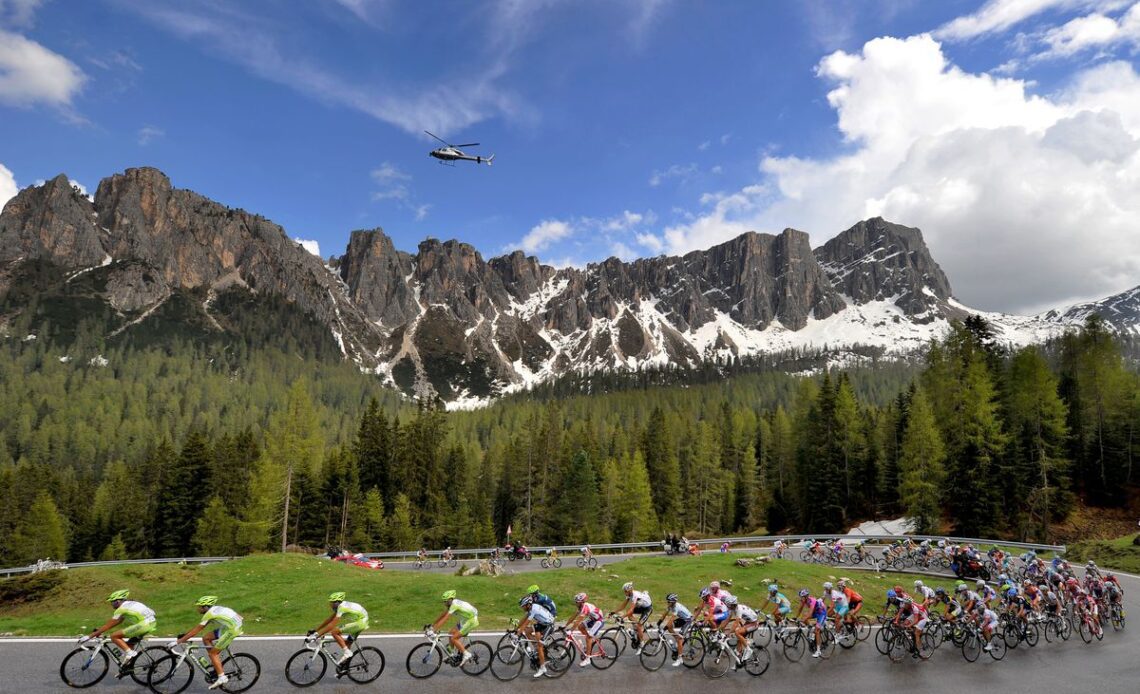The 2023 Giro d’Italia route, unveiled Monday in a ceremony in Milan, is a wild and wacky route that sheds the pleasant formula of some recent editions by taking things… a bit too far. And I am all for it.
There are lots of analyses out there already, and much of it focuses on who will or won’t attend, and then benefit from, the course. I don’t really want to focus on that now, nor do I want to start picking apart stages just yet. But here are a few themes emerging from the course presentation.
Are We Sure This Giro Is Different?
Hm, well, excluding the Vuelta, the other two grandest tours have a certain sameness from year to year — the Tour has its two mountain phases that determine the winner, usually, just like the Giro has two weeks of shenanigans before getting down to the more serious business up north. Riders and teams invest huge sums of money and energy into perfecting their chances to win big prizes, so the top races can’t really just screw them over with a course that is nothing like the last 100 editions.
In some ways this Giro fits the bill. The distance (3,448km) and the total climbing meters is about the same as 2022 — 51k total vertical meters to be ascended is 1k fewer than last year, in fact. But these are still huge numbers, given that 2021 had 47k, 2020 had 44k, and other more recent editions were all down in the mid-40s. So yeah, watch what you eat next spring, guys. Maybe drill a few holes in the saddle. Every ounce will count.
Photo by Tim de Waele/Corbis via Getty Images
And then there is the stress. To me, this route is characterized by the lack of recovery (if you will) anywhere along the way. The eight mountain stages ties last year’s high number for any of the previous decade’s worth of courses, when a typical number of such stages is five or six. And the eight doesn’t include the mountain time trial, which you could easily call a ninth mountain day, a number matched only once (2011) in this millennium. Adding mountain stages + time trials to calculate the total high-stress stages, you get 11 — again, only matched in 2011 and well above several editions (between six and eight). These outlier routes — 2011, 2022 and 2023 — tend to sub in high mountains for medium mountains, listing just two such stages compared to as many as eight of them in 2016 and ‘17. This is the Giro saying, if…
Click Here to Read the Full Original Article at Podium Cafe – All Posts…

